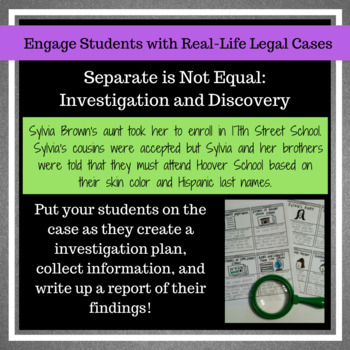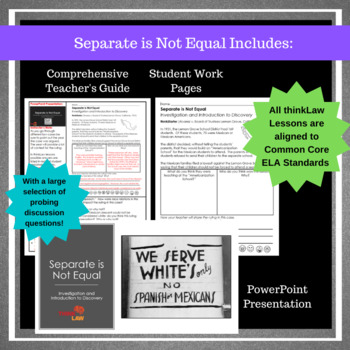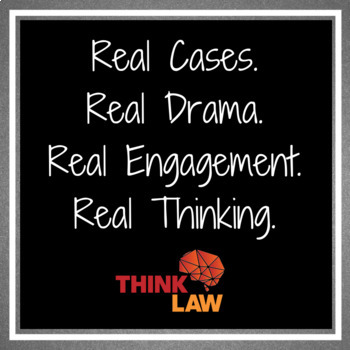Separate is Not Equal: Investigation and Discovery
- Zip
Description
Syvia Medez's parents went to enroll her in 17th Street Elementary School. She was denied admission based on her ethnicity.
This lesson breaks down the landmark desegregation case Mendez v. Westminster into an investigation and discovery activity. Students receive small pieces of information at a time. They must determine how they could learn more.
- What witnesses do they need to talk to? How are the witnesses biased?
- What evidence do they need to collect?
- What questions do they need to ask?
As the lesson progresses, more information is revealed to thinkers. At the conclusion of the lesson, thinkers will write a report with their recommendation to the court.
Investigation lessons may be completed with the student work pages or thinkers can create an investigation board using the investigation templates
thinkLaw uses the same critical thinking strategies taught in law schools and breaks them down in a manner that can be implemented by any teacher and learned by any student!
This lesson is fun and engaging while fostering critical thinking skills!
Separate is Not Equal includes:
- A Teacher's Guide
-Student pages available as a Word Document and an Editable PDF
-PowerPoint Presentation





